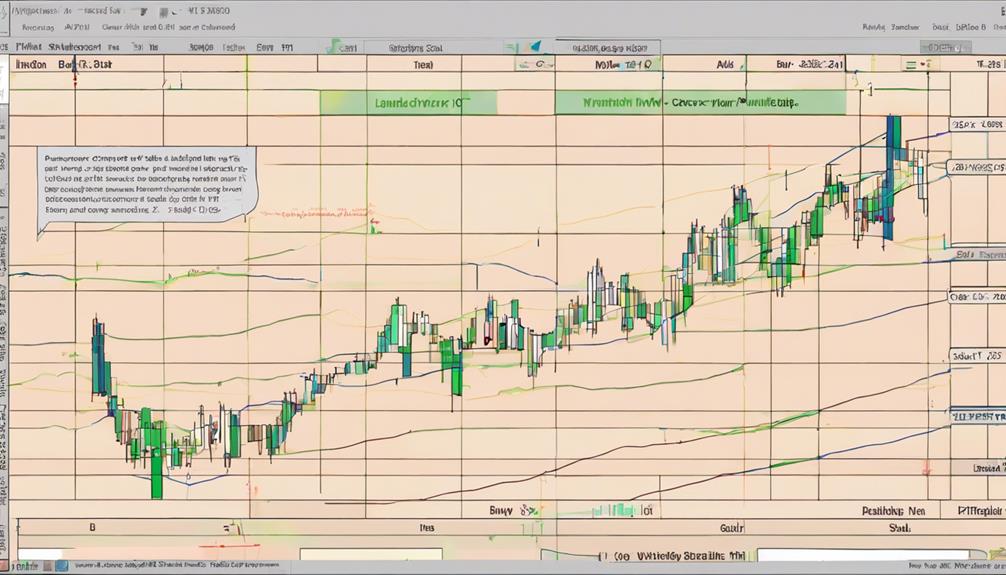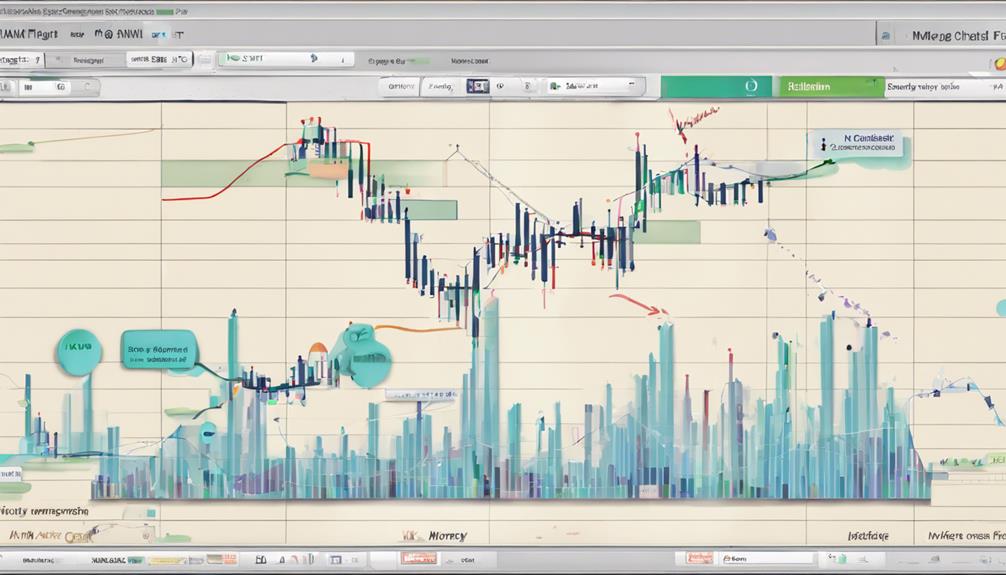When it comes to utilizing the Chaikin Money Flow Indicator effectively, understanding key practices can significantly impact trading decisions.
By mastering the indicator's calculation, interpreting values accurately, and implementing strategic approaches, investors can enhance their ability to navigate market fluctuations and identify potential opportunities.
These three best practices offer a roadmap to optimizing the CMF's potential benefits, ultimately leading to more informed and potentially lucrative investment choices.
Interpretation Tips for CMF Indicator
When interpreting the Chaikin Money Flow (CMF) indicator, traders rely on its values above zero to signal buying pressure and values below zero to indicate selling pressure. The CMF, a Money Flow oscillator developed by Marc Chaikin, analyzes the relationship between price and volume, providing insights into market strength.
Traders utilize CMF to confirm trends and evaluate the intensity of buying or selling pressure. By understanding how CMF interacts with price movements, traders can make informed decisions in their trading strategies. The default setting of 21 periods for CMF can be adjusted to align with different trading styles, allowing for flexibility in analysis.
Maintaining awareness of CMF's typical range of +0.5 to -0.5 prevents overreactions to extreme values, fostering a more balanced approach to trading decisions.
Application Strategies for CMF Indicator

Strategically incorporating the Chaikin Money Flow (CMF) indicator into trading methodologies can enhance decision-making processes and provide valuable insights into market dynamics. When applying the CMF indicator, consider the following strategies:
- Breakout Confirmation:
- Align CMF with price movements to confirm breakouts.
- Rising prices breaking through resistance should have CMF above zero.
- Falling prices breaking through support should have CMF below zero.
- Trend Assessment:
- Use CMF to assess trend strength, direction, and potential reversals effectively.
- It helps in validating breakout signals and potential trend changes.
- Characteristics Evaluation:
- Evaluate trend characteristics by analyzing CMF alongside price movements.
Risk Management With CMF Indicator

Incorporating the CMF indicator into risk management practices is crucial for identifying potential reversals, setting appropriate stop loss levels, and effectively managing trading risks. By using the CMF to calculate Chaikin Money Flow, traders can adjust their risk tolerance levels and determine the trend direction, enhancing their overall risk management strategies.
It is advisable to combine the CMF with other technical indicators to improve risk management practices further. Traders should consider historical patterns of the CMF to make informed decisions and plan their risk management effectively.
Adjusting position sizes based on CMF signals can help control the exposure to risk and optimize risk management approaches in trading scenarios.
Frequently Asked Questions
What Is the Best Setting for Chaikin Money Flow?
The optimal setting for Chaikin Money Flow (CMF) varies based on trading style, time frame, and desired sensitivity. Generally, a standard 21-period CMF is common, while a 50-period CMF suits longer-term analysis. Adjust settings to balance responsiveness and accuracy.
Is Chaikin Money Flow a Good Indicator?
Chaikin Money Flow is a valuable indicator, with positive values indicating buying pressure and negative values signaling selling pressure. Combining CMF with price action analysis and other indicators can provide enhanced trend confirmation for informed trading decisions.
How Do You Use the Money Flow Index Indicator?
The Money Flow Index (MFI) is utilized by traders to gauge overbought and oversold conditions based on typical price and volume. With values ranging from 0 to 100, MFI signals assist in spotting potential trend shifts and confirming market trend strength.
How Do You Use a CMF Indicator?
The CMF indicator measures buying and selling pressure based on volume-weighted averages. Positive values signal accumulation, while negative values indicate distribution. It's crucial to combine CMF with other indicators for comprehensive trend analysis and trade validation.
Conclusion
In conclusion, mastering the Chaikin Money Flow Indicator involves understanding its calculation, interpreting values accurately, and implementing effective trading strategies.
By following best practices for CMF usage, investors can gain valuable insights into market trends and make informed decisions.
How can you leverage the power of the CMF indicator to enhance your trading outcomes and optimize your investment choices?
